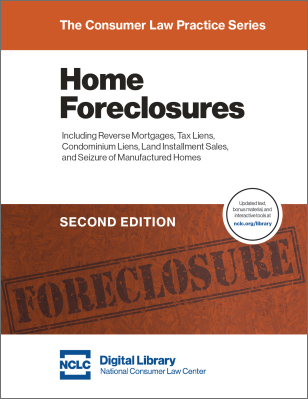**This exclusion has been extended to income forgiven in 2017. Read more here.**
On December 18, 2015, President Barack Obama signed the Consolidated Appropriations Act of 2016, Public Law 114-113 (129 Stat. 2242; 887 pages), which includes a two-year extension of the qualified principal residence indebtedness exclusion that had expired at the end of 2014. The qualified principal residence indebtedness exclusion has been an important tax exclusion for struggling homeowners trying to pick up the pieces since the foreclosure crisis.
Typically when debt is forgiven, the discharged amount is included in a taxpayer’s gross income. The qualified principal residence indebtedness exclusion in 26 U.S.C. § 108(a)(1)(E), however, allows a taxpayer to exclude up to $2 million of the forgiven debt related to a decline in the value of the residence or to the financial condition of the taxpayer. Many shorts sales and mortgage modifications include debt forgiveness that falls under the qualified principal residence indebtedness exclusion. Without this two-year extension, many homeowners entering into these agreements in 2015 and 2016 may have been subject to a hefty tax bill.
The extension applies to debt discharged before January 1, 2017 and is retroactive to discharges since the beginning of 2015. Furthermore, the qualified principal residence indebtedness exclusion also applies to discharge subject to a written agreement entered into in 2016, even if the actual discharge takes place at a later date.
For full text of the qualified principal residence indebtedness exclusion extender see Consolidated Appropriations Act, 2016, Public Law 114-113, Div. Q, Protecting Americans From Tax Hikes Act of 2015, Title I, Subtitle C, Part 1, sec. 151 (114TH Cong. Dec. 18, 2015), available at https://www.gpo.gov/fdsys/pkg/BILLS-114hr2029enr/pdf/BILLS-114hr2029enr.pdf.
For a more detailed discussion on qualified principal residence indebtedness, see the online version of NCLC’s Foreclosures and Mortgage Servicing § 12.6.4.7. In addition, § 12.6 examines other tax consequences of a foreclosure sale, and the rest of Chapter 12 explain other issues arising after a foreclosure sale. The treatise in general considers mortgage servicing abuses, servicing requirements, loan modifications and loss mitigation options, defenses to foreclosure, and special issues arising from foreclosures relating to manufactured homes, land installment sale contracts, condominiums, reverse mortgages, tax liens, and foreclosure rescue scams.
**This exclusion has been extended to income forgiven in 2017. Read more here.**
This article is provided courtesy of NCLC’s Digital Library—20 consumer law treatises that for over 30 years have been key resources helping attorneys all over the country win cases involving credit reporting, debt collection, consumer credit, foreclosures, mortgage servicing, student loans, and more. Written by the nation’s consumer law experts, both the print and online versions of the treatises are easy to read, search, and navigate.


